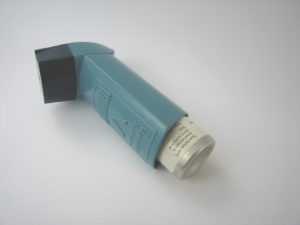
A group of respiratory medicine experts have called for an overhaul in our thinking about how asthma and other airways diseases are categorised and treated, saying the current approach is outdated and does not reflect advances in treating these conditions.
Outlining their views in a specially commissioned article in The Lancet, the 23 international asthma experts – co-chaired by University of Oxford Professor of Respiratory Medicine Ian Pavord, and Andy Bush, Professor of Paediatric Respirology at Imperial College London – say that progress in treating asthma has slowed in the past 10 years despite increased spending on treatments, and has not matched that enjoyed in other medical fields.
“We believe that the most important cause of this stagnation is a continued reliance on outdated and unhelpful disease labels, treatment and research frameworks, and monitoring strategies, which have reached the stage of unchallenged veneration and have subsequently stifled new thinking,” the experts in the Lancet Commission say.Asthma is responsible for considerable global morbidity and health-care costs. A study by Asthma UK last year found that asthma costs the UK health service at least £1.1 billion each year, and that more than 270 people are admitted to hospital each day because of asthma attacks.
Treatments
Prof Pavord leads the Respiratory Theme of the National Institute for Health Research (NIHR) Oxford Biomedical Research Centre (BRC), based at the Oxford University Hospitals NHS Foundation Trust and the University of Oxford. He said: “Despite considerable progress being made against key outcomes such as mortality and hospital admissions in the 1990s and early 2000s, we’ve seen far too little progress in the past 10 years, despite escalating treatment costs and the availability of highly effective treatments.”

“This Commission has sought to identify entrenched areas of asthma management and treatment in which progress has stalled, and to challenge current principles. It’s a call to action for all clinicians involved in this field.”
The Commission argues that the physiology-based classification system for airways diseases is obsolete because it provides a limited view of the distinct causes of morbidity and mortality in patients with asthma.
The experts believe airways diseases should be deconstructed into traits that can be measured and, in some cases, modified. An important catalyst for this has been the discovery of simple and clinically-accessible measures of one of the most influential and treatable traits: eosinophilic airway inflammation.
Stratification using these measures identifies patients who are at risk of adverse outcomes and are likely to benefit from inhaled corticosteroids much more precisely than traditional measures and disease labels. The use of these biomarkers to stratify patients has been instrumental in recent successful new drug development.
Targeted
Looking at how this new approach can be made a reality in all healthcare settings, the commission calls for a fundamental rethink of the current guidelines, with greater emphasis on traits that can be measured and treated, and less emphasis on arbitrary disease labels.
This means that inhaled corticosteroids would be used in a more targeted and efficient way, based on biomarkers, and should not be escalated unless the biomarker profile suggests treatment will be successful.
The commission says that when considering asthma treatment, clinicians usually focus on controlling established asthma, rather than addressing the fundamental underlying causes, and rethinking how airway diseases evolve through infancy, childhood and adult life.
“We are asking what we can do to prevent the inevitable progression from an intermittent early childhood wheeze to persistent asthma in the adolescent years and a subsequent lifetime of therapeutic drug dependence,” Prof Pavord says. “We want to see a commitment to develop treatment approaches that focus on prevention and cure.”
The experts propose a rethink around how asthma attacks are treated. The article says: “We advocate consideration of asthma attacks as a sentinel event that should prompt a thorough re-evaluation of asthma management in the patient, and we propose a re-thinking of current one-size-fits-all approaches to treatment and secondary prevention of attacks.
“Prevention of attacks of asthma is one of the most tractable aspects of airway disease management, being highly responsive to better control of lower airway inflammation, whether achieved with targeted corticosteroid treatment, or with highly selective biological drugs that inhibit type 2 inflammation.”
Precision
Finally, the respiratory experts call for an ambitious “revolution in thinking about asthma that is generalisable to all airways diseases”. This would lead to the delivery of better and more precise care to each patient, separating airways diseases into component parts and addressing each in turn, stratified by risk.
Prof Pavord concludes: “This commission feels it is time for a new era in asthma management, where it is more about getting the right treatment to the right patients – so, a precision medicine approach rather than the one-size-fits-all approach we’ve been doing up till now.
“We hope this better targeting of treatment will result in better outcomes over the next 25 years, recognising that asthma is a heterogeneous condition. We believe the approach we advocate, which takes a step back from traditional disease labels, will change clinical routine, diverting the medical community away from a diagnostic and therapeutic standstill, and resulting in a new system that will be valuable in epidemiological and interventional studies.
“This approach should increase the likelihood that we will unravel the key components of asthma and, eventually, develop better medicines and achieve better outcomes for our patients.